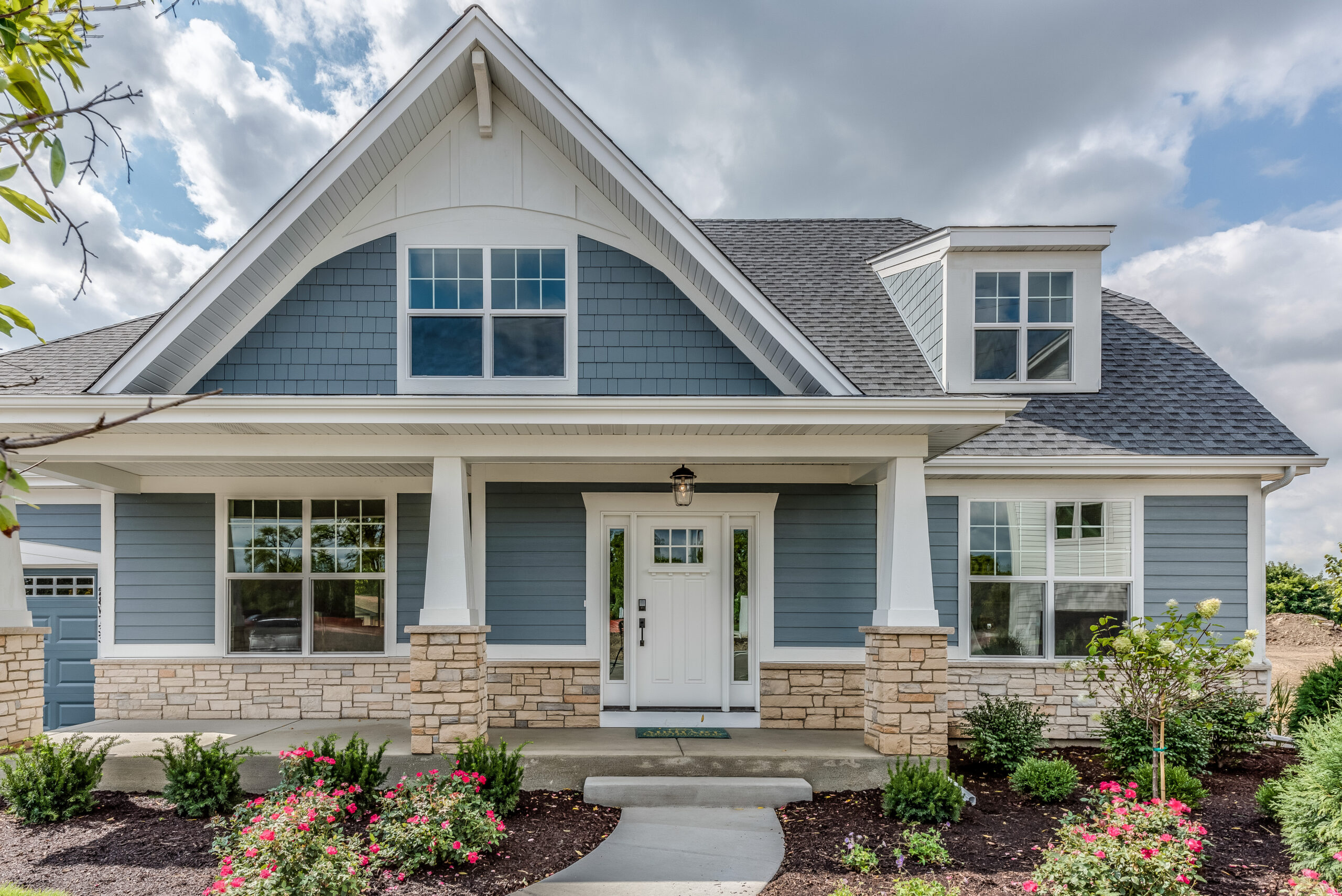BENEFITS OF A WOOD-BURNING FIREPLACE:
- Wood is a renewable fuel source
- Offers character to a room
- Ritual of making and tending a fire
- Creates an unmatchable ambiance
BENEFITS OF A GAS FIREPLACE:
- Efficient heating
- Environmentally friendly
- Requires virtually no cleaning and little maintenance
- Effortless operation
1. THE SENSORY EXPERIENCE
Wood-burning fireplaces win in the character category: They offer the snap, crackle, and pop (and the possibility of roasting a marshmallow over the flames) that gas-fueled fires can’t match.
That said, advances in gas fireplaces are putting their characterless reputation to rest. Flames have become more realistic (some even offer variable height adjustment), and ceramic logs better resemble the real thing. All that’s missing is the sound and smell (wait long enough and there may be an app for that).
2. HEATING EFFICIENCY
Great at creating ambiance, traditional wood-burning fireplaces are poor performers: When it comes to heating, they get only about a 15 percent efficiency rating. Wood fires do get very hot—upwards of 1,100 degrees Fahrenheit—but most of that heat disappears up the chimney. To make matters worse, as the hot air rises, it creates a draft that pulls warm air from other parts of the house up the chimney with it.
With energy-efficiency ratings between 75 and 99 percent, depending on the type of appliance used, gas fireplaces are the winner in the heating category. They come in three types: log sets that sit in existing open fireplaces, inserts that can be installed in most masonry fireplaces, and complete new built-in fireplaces. Inserts and built-in gas fireplaces are the best heat producers, filling rooms with a mix of warm air and radiant heat.
3. EMISSIONS
Air quality is another consideration. Wood-burning fireplaces create particle pollution indoors and out. That woodsy smell can be a health and environmental hazard
4. CLEANING AND MAINTENANCE
The soot and ash that are by-products of wood-burning fireplaces require frequent cleaning.
Wood-burning fireplaces bring the burden of chimney maintenance that gas fireplaces don’t have. Burning wood creates creosote, which accumulates on the lining of the chimney and becomes a fire hazard. Chimneys should be checked annually and will need to be cleaned periodically to prevent this buildup. The EPA also recommends checking chimneys inside and out for cracks that can allow smoke to enter a house or expose the chimney’s components to high temperatures that may cause a fire.
Gas fireplaces require little more than a dusting, a boon for the clean freak. They’re not, however, maintenance free: It’s recommended that gas fireplaces be cleaned and adjusted annually by a professional to ensure safe and efficient operation.
5. CONVENIENCE
Gas fireplaces trump wood-burning fireplaces in ease of operation, starting with the fuel source: Wood has to be stored and is bulky and dirty; a cord is four-feet tall, four-feet deep, and eight-feet wide. Gas is fed through a pipe and no storage is required. That said, if you don’t have natural gas in your area, propane is the alternative gas and it requires a bulky tank for storage.
Fire-start with push-button ease if you have a gas fireplace—some even come with remotes (though, we admit, that seems a bit sterile). And they roar on until you turn them off. Wood-burning fireplaces, on the other hand, require wood stacking, lighting, and tending. A ritual that’s part of the whole experience or a nuisance? You decide.
6. COST
The cost of operating wood-burning and gas fireplaces is relatively low. A cord of wood is anywhere between $200 and $400, depending on your location and the type and condition of wood. Natural gas runs from $0.20 to $0.40 per hour for an average gas fireplace. Variations depend on the BTU rating of your burner.
Gas fireplaces can have a positive effect on overall heating costs by enabling you to turn down the central heating down and use the gas fireplace to heat a frequently used room. Zone heating also reduces the amount of money spent heating rooms that sit unused. Conversely, using central heat while burning wood in a fireplace can make your heater to work harder to maintain temperatures throughout the house.
Get in touch. Let’s talk about your projects!
Contact A Beautiful Co for your next custom build! We want to help you make the perfect living space for you. Reach out today.
A Beautiful Company started out as a painting and remodeling contractor specializing in old world craftsmanship. It has evolved into a major general contracting business over the past 27 years. Now a Beautiful Company is a multi-million dollar, women owned, commercial and residential construction company with clients in three states; Connecticut, New York and Rhode Island.
BATHROOM REMODELING
COMMERCIAL RENOVATION SERVICES
KITCHEN REMODELING
REMODELING & ADDITIONS
CUSTOM HOMES





